Hyundai's Hydrogen Semi-Truck Concept Is Built to Take on Tesla
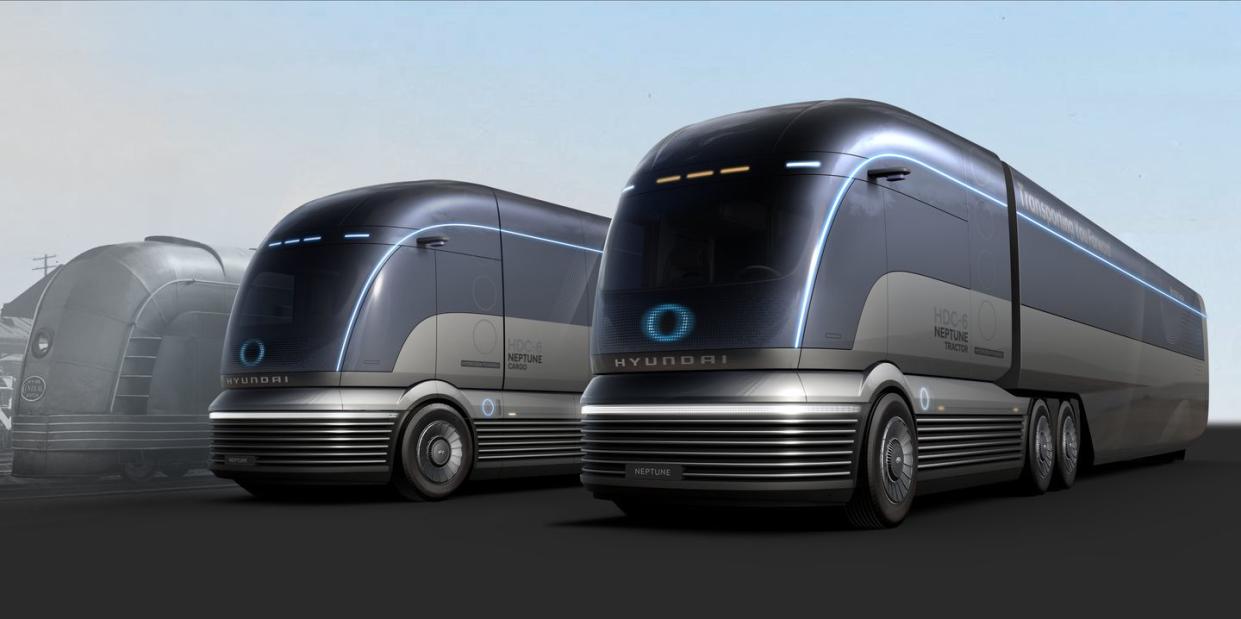
Hyundai rolled out its concept for a hydrogen-powered semi that is designed to meet both U.S. and European regulations.
The powertrain needs a few years to get up to speed, but the Neptune could arrive in 2023.
Hyundai already sells two hydrogen fuel-cell passenger vehicles in the U.S. market, the Tucson and the Nexo.
Hyundai's hydrogen future just got a lot bigger. The company offers two hydrogen passenger cars in California, fuel-cell (FCEV) versions of the Tucson SUV and the Nexo crossover, but a future hydrogen-powered entry in the U.S. market could compete with Macks and Peterbilts instead of the Toyota Mirai and the Honda Clarity.
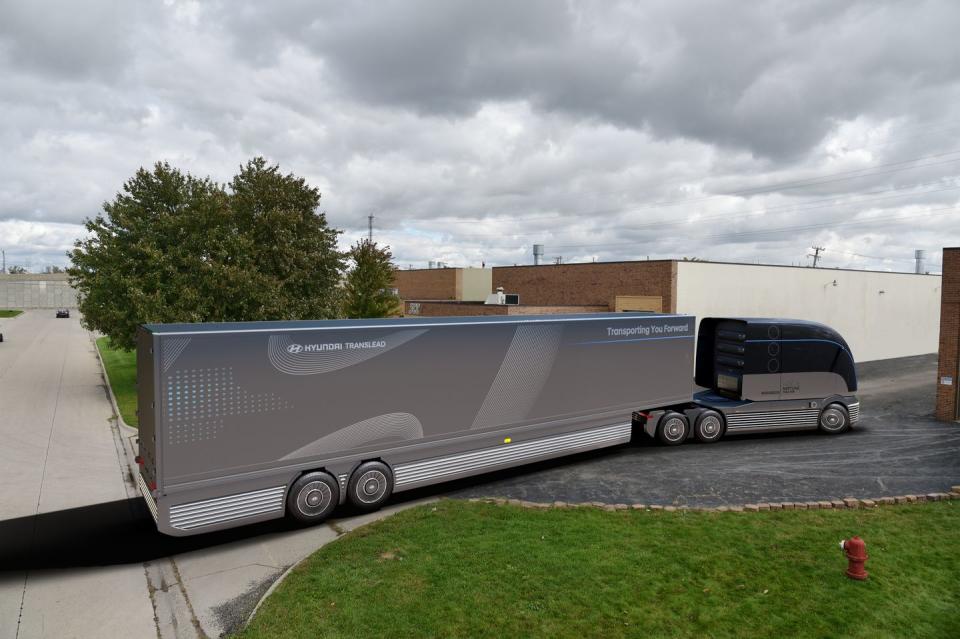
The Hyundai HDC-6 Neptune concept was unveiled at the North American commercial-vehicle show in Atlanta this week, the latest shift in strategy for the Korean company. Hyundai already has thousands of its semi-trailers on the road in the U.S., but it does not sell any of its semi-tractors here. The Neptune could be the first, part of the company's expansion of its FCEV 2020 vision to the U.S. market.
Globally, it's a different story, since fossil-fuel Hyundai semi-tractors are sold in more than 100 countries, and the company's zero-emission truck future is starting outside the U.S. as well. Hyundai will also deliver the first of 1600 hydrogen-powered semi-tractors to companies in Switzerland later this year. While the powertrain in these trucks is zero emission, the look is a more standard cab-over design based on Hyundai's XCient truck.
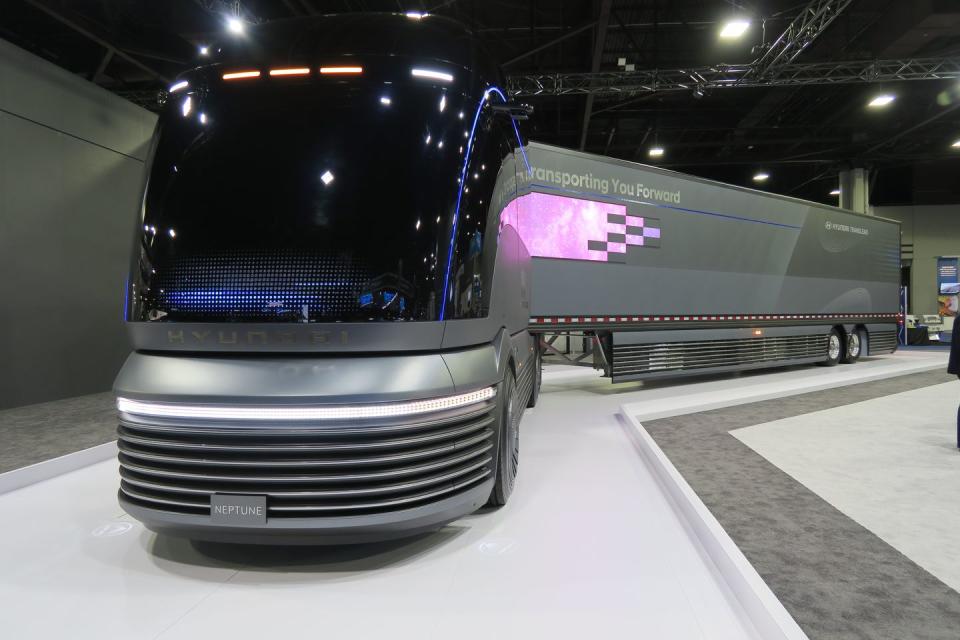
Normal is not the case with the Class 8 heavy-duty Neptune. More Mercury Streamliner than semi-truck, the Neptune has a front end dominated by a swooping windshield and a large, low air intake. An LED screen in the grille area can be used to indicate if the vehicle is at rest or to display a company logo or other usage information. Steps leading into the truck tuck away when not in use, adding to the overall aerodynamic look of the semi.
The Neptune wasn't just made to look cool, Hak Soo Ha, Hyundai Motor Company's vice president, interior design group, told Car and Driver. Although it's sitll a concept, the truck was designed with real-world use and regulations in mind. The front end sticks out a little farther than most European trucks, but it will still be able to meet the tight 41-foot turning radius requirements there. And in the U.S., the weight of the powertrain has been distributed so that an eventual production model will not run afoul of the Federal Bridge Gross Weight Formula. Potential competitors to the Hyundai in the alternative-energy-semi space aren't building their trucks with these global regulations in mind, Ha said, which means they will need to develop different models for different models or rework their designs. "Tesla and Nikola never took into account these regulations," he claimed.
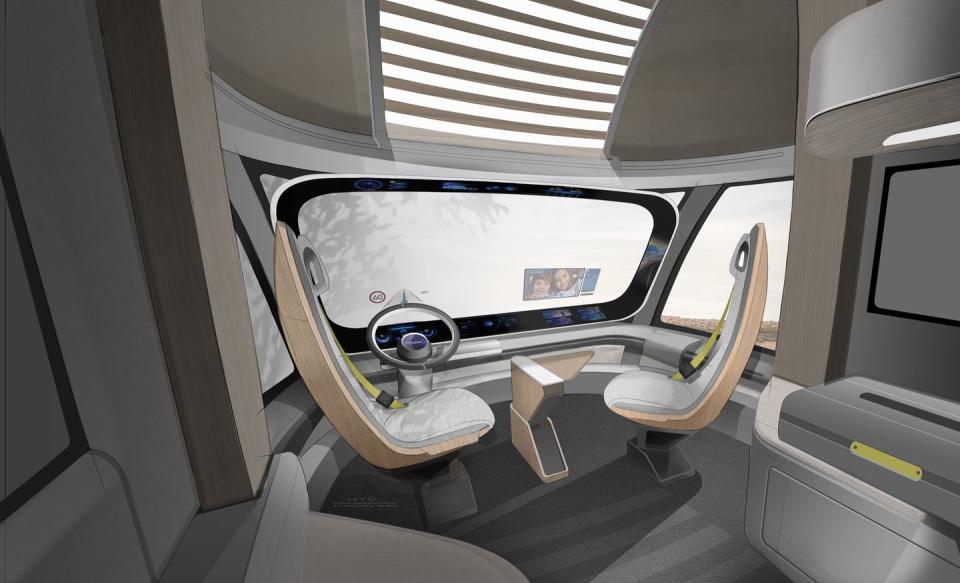
Accessed through a sliding door, the Neptune's cabin is as futuristic as any concept car, outfitted with "transparent" A-pillars that use screens to show what's on the other side, driver monitoring cameras, and a small living space that includes a kitchen, shower, and toilet and a sleeping area for two. When the truck is used in autonomous mode, the windshield can be used as a giant movie screen.
It's in the powertrain where the Neptune shows its connection to the automaker's hydrogen passenger vehicles. While not powerful enough to compete with diesel engines just yet, the Neptune uses two of Hyundai's current-gen fuel-cell stacks taken from the Nexo. Each of those is good for 127 horsepower, which gives the Neptune a total output of 255 horsepower. A fully functional fuel cell semi would need around 469 horsepower, Saehoon Kim, Hyundai Motor Group's vice president and head of its Fuel Cell Group, told C/D.
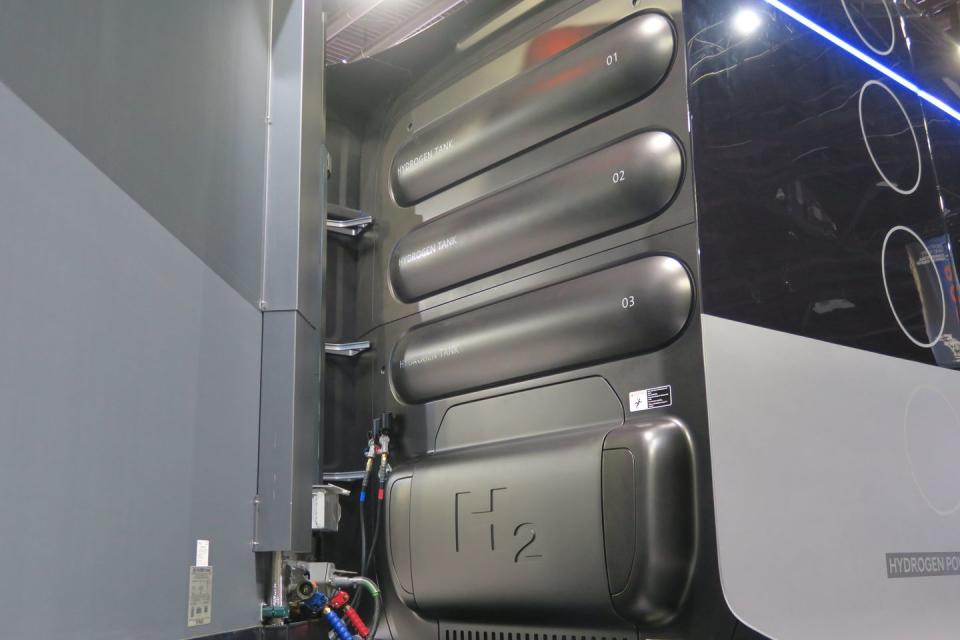
"By the time this truck is commercialized, we will put a proper-sized and proper-powered fuel-cell system in it so it can perform on par with diesel trucks," he said. " We started with passenger vehicles, and we have to use that same system at the moment."
Future passenger cars wouldn't necessarily benefit from that kind of power output, but the cost and reliability lessons that Hyundai learns as it builds H2 commercial vehicles could lead to better hydrogen-powered SUVs and sedans. "We will try to use our best knowledge for each," he said.
The Neptune on display had four compressed-hydrogen fuel tanks, which could offer a full day's worth of range, around 600 to 800 miles, Hyundai said. The truck could be equipped with up to eight tanks for additional range.
Hyundai also said it is interested in finding partners to help it establish a hydrogen ecosystem for commercial vehicles. A production truck based on the Neptune is targeted for 2023, and when it gets here, it could look a lot like the concept. "Efforts are going on to retain as much of this as possible," Ha said.
You Might Also Like

